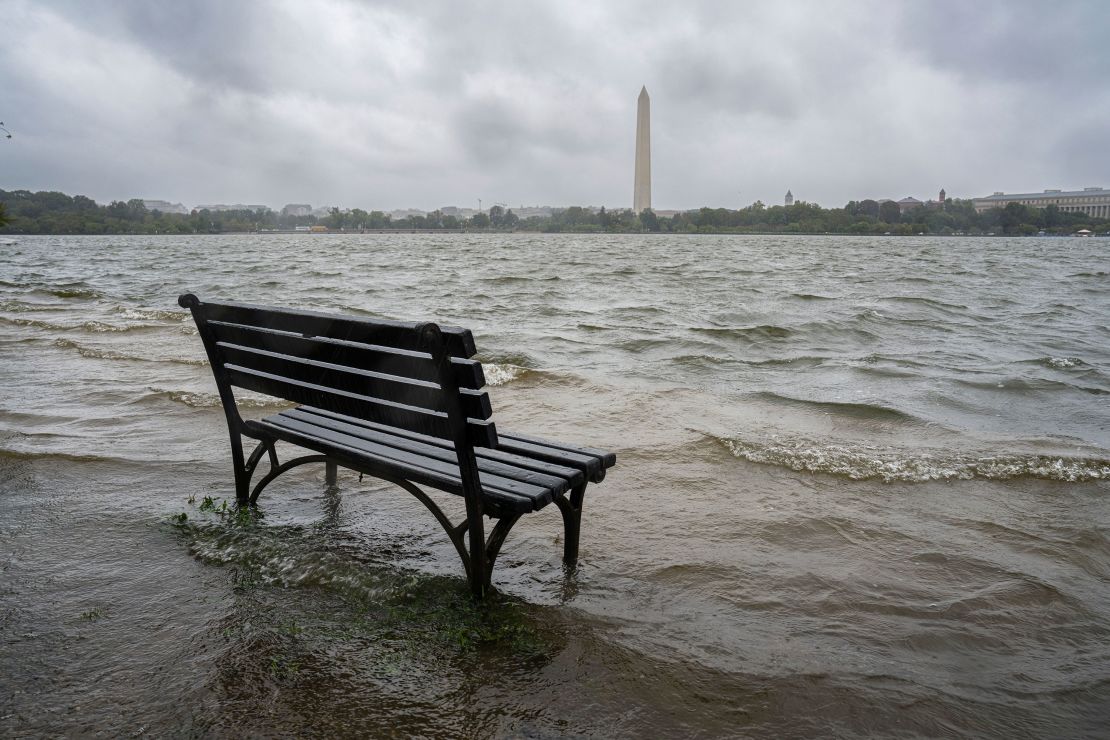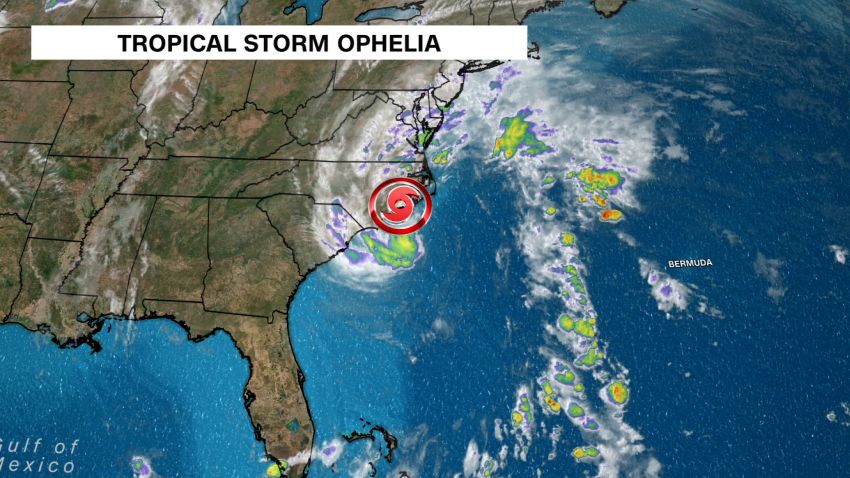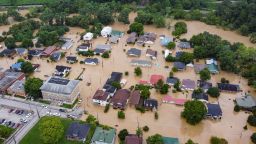Ophelia, now a post-tropical cyclone, continues to weaken as it moves over the mid-Atlantic Sunday, leaving nearly nine million people from Long Island to Southern Maryland under coastal flood alerts.
Areas from eastern Pennsylvania to just south of Long Island could see heavy rainfall Sunday, potentially leading to scattered instances of flash flooding. The National Weather Service warned flooding could be significant enough to close roads and threaten homes and businesses in some areas.
The heavy rain will shift northeast on Sunday to over parts of New England and the Northern mid-Atlantic as a weakening Ophelia continues its trek up the East Coast, forecasters said.
“The associated heavy rain will create mainly localized areas of flash flooding, with urban areas, roads, and small streams the most vulnerable,” the Weather Prediction Center said.
New York City issued a travel advisory through Sunday, warning of a “a long-duration rainfall event.”
“While the warmer summer days are behind us, New Yorkers should take precautions regarding the forecast for high winds and rain during our first fall weekend,” said NYC Emergency Management Commissioner Zach Iscol.
New Yorkers who live in basement apartments in flood-prone areas were told to prepare to move to higher ground and avoid driving on flooded streets or entering flooded subway stations.
A coastal flood warning was also issued Saturday for communities in New Jersey’s Atlantic City, where several roads were closed due to flooding.
“With high tide right around now along the Atlantic coast, we are getting numerous reports from coastal communities of street flooding and road closures,” the weather service office in Mount Holly posted on X, formerly Twitter.
Ophelia was a tropical storm at near-hurricane strength when it made landfall near Emerald Isle, North Carolina, early Saturday, knocking out power, flooding coastal streets and forcing rescues. States of emergency were declared in Virginia, North Carolina and Maryland.
The storm weakened throughout the day and disbanded into a post-tropical low by Saturday night, with little change in strength forecast over the next couple of days.
Now, Ophelia, with sustained winds of 35 mph, is expected to keep moving over southeastern Virginia and then over the Delmarva Peninsula Sunday, before dissipating Monday, according to the National Hurricane Center.
For now, Ophelia’s key threats include:
- Dangerous ocean conditions: The swells could whip up “life-threatening surf and rip current conditions,” the hurricane center said. These conditions will affect much of the East Coast throughout the weekend, the center said.
- Heavy rain: Parts of the mid-Atlantic from north central North Carolina through New Jersey could receive 1 to 3 inches of rain, with some areas getting up to 5 inches. About 1 to 3 inches of rain could also fall across southeastern New York through southern New England.
- Flooding: The Weather Prediction Center warns of a slight risk of excessive rainfall over parts of northern mid-Atlantic and Southern New England from Sunday into Monday morning. “The associated heavy rain will create mainly localized areas of flash flooding, with urban areas, roads, and small streams the most vulnerable,” the weather service said.
Roads flood in North Carolina
As Ophelia started lashing North Carolina, storm surge flooded coastal areas and inlets in the state overnight with wind gusts of 73 mph hitting Cape Lookout, along the state’s Outer Banks.
Five people, including three children, aboard an anchored sailing vessel were rescued from Lookout Bight Friday, officials said.
The group were faced with 35 to 40 mph winds and 6-foot to 8-foot seas, according to the US Coast Guard.
“The owner of the vessel did not feel comfortable in the channel and requested to be rescued,” the Coast Guard said. No one was injured.
Meanwhile, some areas were dealing with storm surge, an abnormal rise of water generated by the storm.

Residents of Washington, North Carolina, were warned to “avoid the downtown area” on Saturday as about 3 to 4 feet of storm surge from Ophelia sent waters over the city’s boardwalk area, a city Facebook post read.
In New Bern, which sits along two rivers in North Carolina about 120 miles east of Raleigh, roads were flooded and water crept inland as the levels rose in the downtown area, city officials said on Facebook. Photos posted on the city’s social media page show a flooded children’s park and ducks swimming through flooded streets.
Emergency crews in New Bern barricaded flooded areas of the city, including Union Point Park, which “looks like a lake,” city officials said Saturday morning.
At one point Saturday, as many as 70,000 homes and businesses across North Carolina and Virginia lost power as winds battered the coast. Many of those customers had power restored by the end of the day, according to poweroutage.us.
CNN’s Lauren Mascarenhas, Aya Elamroussi, Melissa Alonso and Artemis Moshtaghian contributed to this report.


